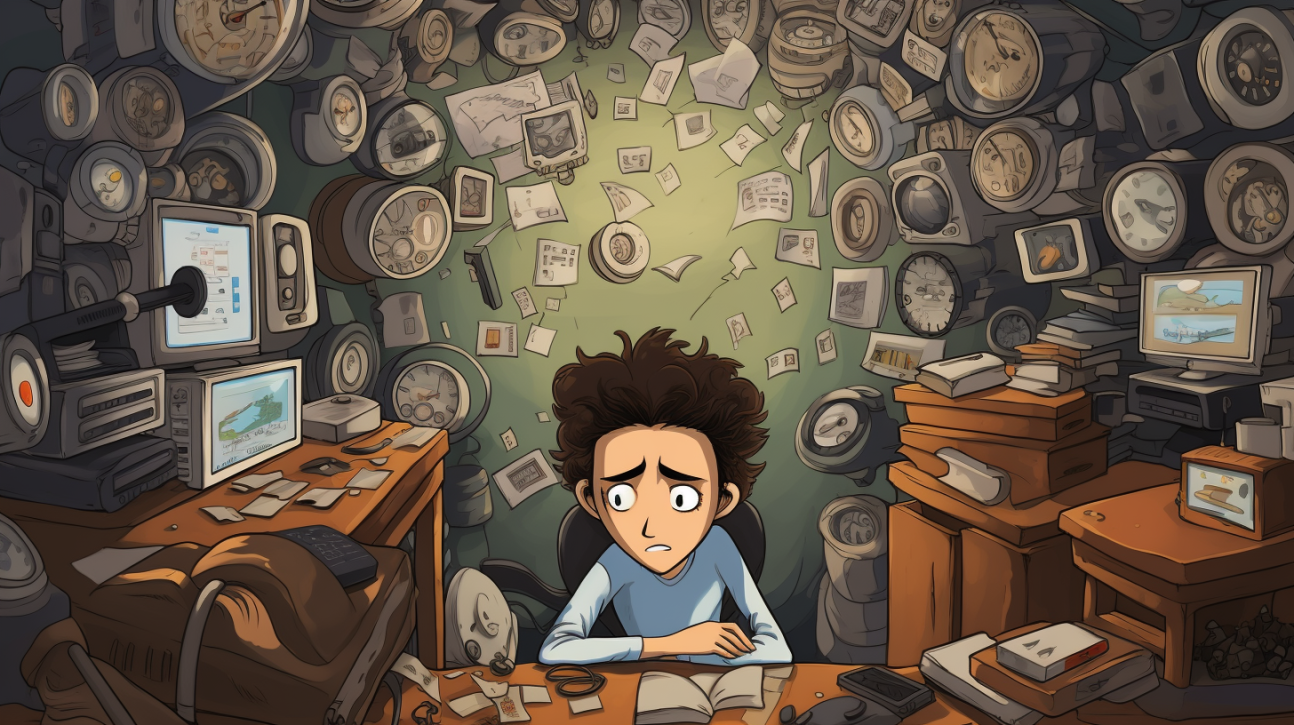Obsessive-compulsive disorder (OCD) is a chronic and debilitating mental health condition characterized by obsessive, anxiety-provoking thoughts and compulsive rituals aimed at reducing anxiety.
Affecting 1-3% of adults worldwide, OCD often begins in childhood and impairs functioning across life domains.
Advances are being made on multiple fronts to better understand and treat this complex disorder.
Key Facts:
- OCD affects 1-3.2% of the global population, causing significant disability.
- Onset is often in childhood/adolescence, with impairments persisting into adulthood.
- Treatment has progressed from religious/moral perspectives to evidence-based therapies targeting biological roots.
- Leading treatments include medications like SSRIs and psychotherapy like exposure therapy.
- 40-60% of patients have incomplete responses, spurring development of augmentative/alternative interventions.
- Noninvasive brain stimulation and neurosurgery are last-resort options for severe refractory OCD.
- Research into genetics, neurocircuitry and digital therapeutics continues to inform future directions.
Source: Clinical Psychopharmacology and Neuroscience 2023
OCD: Religious Origins to Medical Model
Historically, obsessive-compulsive symptoms were viewed as a moral failing or possessed state, with no medical treatment.
By the early 20th century, pioneers like Janet and Freud reconceptualized OCD as rooted in psychological conflicts.
But psychotherapy remained the sole intervention until the 1960s, when discoveries of medication efficacy led to recognition of OCD as a medical illness.
Over decades of research, OCD has been reclassified from an anxiety disorder to a related but distinct category in DSM-5 called obsessive-compulsive and related disorders (OCRDs).
This reflects updated knowledge on the heterogeneity of its symptoms and biology.
Core Features: Obsessions & Compulsions
OCD is characterized by two central features:
- Obsessions – intrusive, distressing thoughts, images or urges that are experienced as ego-dystonic, beyond one’s control. Common themes include contamination, accidents, forbidden thoughts, and need for symmetry.
- Compulsions – repetitive mental or behavioral acts aimed at reducing anxiety triggered by obsessions. Examples are washing, checking, counting, tapping, praying.
Avoidance of triggers is also common.
While OCD behaviors provide temporary relief, the urge soon returns, fueling an unending cycle.
Significant shame often accompanies symptoms.
Biological Roots of OCD: A Neurocircuitry Model
Obsessive-Compulsive Disorder (OCD) is not merely a behavioral concern; its roots dig deep into the brain’s neural networks.
The cortico-striato-thalamo-cortical (CSTC) circuits, bridging cortical zones like the orbitofrontal cortex with subcortical realms such as the striatum and thalamus, have been identified as central players in the OCD landscape.
Neurotransmitter Imbalance
At a chemical level, disruptions in neurotransmitter balance, particularly serotonin and glutamate, are evident in OCD patients.
These imbalances may mediate the brain’s response patterns associated with obsessive-compulsive behaviors.
Interplay of Genetics & Environment
Genetic predispositions intermingle with environmental triggers, ultimately causing irregularities within these pre-identified neural vulnerability pathways.
This intricate dance between nature and nurture shapes the complexity of the disorder.
Cutting-Edge OCD Treatment Strategies
A range of pharmacological and psychological interventions have proven efficacy for OCD.
Yet 40-60% of patients have incomplete responses, driving further innovation.
First-Line Treatments
- Selective serotonin reuptake inhibitors (SSRIs) such as fluoxetine have cemented their position as primary pharmacological interventions.
- On the other hand, clomipramine is often reserved as a backup.
- Concurrently, the psychotherapeutic world recognizes exposure and response prevention (ERP) under the broader cognitive-behavioral therapy (CBT) framework, as the gold-standard intervention for OCD.
- For patients grappling with moderate to severe OCD, a combination of medication and ERP is often advised.
- However, logistical challenges in accessing ERP often result in a reliance solely on serotonin reuptake inhibitors.
Augmentation & Alternatives for Partial Responders
A not-insignificant segment of OCD patients experience suboptimal symptom relief with first-line treatments.
For partial responders:
- Introducing antipsychotics such as risperidone or aripiprazole alongside serotonin-reuptake inhibitors (SRIs) is frequently explored.
- Some clinicians may recommend switching to clomipramine or SNRIs like venlafaxine.
- Glutamatergic agents, exemplified by memantine, present a glimmer of hope, though they’re still in investigational stages.
- In more avant-garde realms, repetitive Transcranial Magnetic Stimulation (TMS) is gaining traction as a potential intervention.
New Interventions for Treatment-Resistant OCD

For the subset of OCD patients (20-25%) who remain unresponsive to standard interventions and continue to experience debilitating symptoms, the quest for relief steers towards more radical options.
Deep Brain Stimulation (DBS)
This involves surgically implanting electrodes within the brain, targeting areas like the nucleus accumbens.
By sending electric impulses, DBS can modulate neural activity in the targeted region.
Ablative Neurosurgery
More invasive than DBS, procedures like gamma knife radiation and MR-guided focused ultrasound aim to ablate specific brain areas identified as hotspots for OCD activity.
Experimental Avenues
The therapeutic arsenal for severe OCD is expanding with the exploration of intravenous ketamine, known for its rapid-acting antidepressant properties.
Additionally, digital adaptations of CBT, leveraging the power of technology, are also on the horizon.
In the ever-evolving landscape of OCD treatments, what remains constant is the commitment to finding effective, lasting solutions for those affected by this challenging disorder.
Future & Precision Medicine in OCD
As neurobiology unfolds, there is optimism for tailored OCD treatments.
Efforts to develop personalized medicine include:
Gene Mapping and Genetic Underpinnings
As in other areas of medicine, genetic research is playing a pivotal role in our understanding of OCD.
Researchers are diving into the intricacies of the human genome to pinpoint the specific genetic markers or mutations that might predispose an individual to develop the disorder.
By identifying these genetic hotspots, there’s potential to develop targeted treatments that address the root genetic causes, rather than just managing symptoms.
Advances in Neuroimaging & Electrophysiology
The human brain is a highly intricate organ, and its exact workings in relation to OCD remain something of a mystery.
However, with the advent of advanced neuroimaging techniques such as functional MRI and PET scans, as well as the study of electrophysiological responses in the brain, scientists are beginning to uncover the specific neural circuits and pathways that malfunction in OCD.
This knowledge could pave the way for interventions that specifically target these neural anomalies.
Harnessing Big Data & Machine Learning
The era of big data presents unprecedented opportunities to analyze vast amounts of information, identifying patterns and trends that were previously undetectable.
In the context of OCD, machine learning algorithms can analyze a patient’s medical history, genetic data, and even behavioral patterns to predict which therapies might be most effective for them.
Such predictive analytics could drastically reduce the trial-and-error approach that often characterizes OCD treatment today.
Virtual Reality (VR) & Digital Therapeutics
The digital revolution isn’t just about data – it also brings tools that can be directly used in treatment.
VR, for instance, offers immersive environments that can be used in exposure therapy for OCD patients, allowing them to confront and process their fears in a controlled setting.
Meanwhile, digital therapeutics, such as apps and online platforms, offer therapy techniques, coping mechanisms, and monitoring tools that patients can access anytime, anywhere, ensuring more consistent care.
A Brighter Future for OCD Treatment
OCD symptoms were once viewed as an untreatable curse.
Today, a range of effective evidence-based interventions provide hope.
Yet incomplete recovery means room for progress remains through basic and clinical research.
Exciting horizons lie ahead as science continues unraveling the mysteries of OCD’s origins and optimizing its treatment.
References
- Study: Clinical advances in treatment strategies for obsessive-compulsive disorder
- Authors: Daeyoung Roh et al. (2023)







